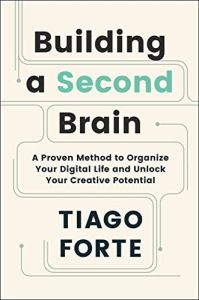
Building a Second Brain
A Proven Method to Organize Your Digital Life and Unlock Your Creative Potential
Recommendation
In today’s Information Age, you can’t rely on your brain alone to remember facts and retain information, says productivity expert Tiago Forte. Trying to keep abreast of the nonstop flow of information will overwhelm you. When Forte suffered a chronic, debilitating illness that damaged his working memory, he developed a smart note-taking system to help him function. He outsourced the cognitive demands of remembering to intelligent machines, so he could focus on creative work. Forte shares actionable insights to help you create your own personal knowledge management system – your “Second Brain.”
Summary
About the Author
Tiago Forte is a global productivity expert and the founder of Forte Labs. He wrote The PARA Method: Simplify, Organize and Master Your Digital Life.













Comment on this summary